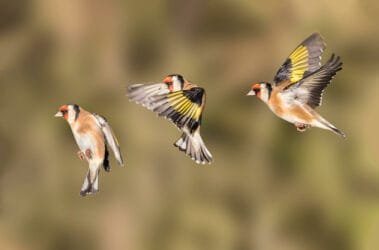Photographing birds in flight appears to be fascinating, but capturing high-quality images of birds in flight can be challenging. You’ve probably encountered issues such as motion blur, incorrect focus, exposure issues, and so on.
You must be wondering how to take photos of birds in flight. The answer is the technique you will employ will vary greatly depending on the species you’ll be photographing. Because each bird species has distinct flight patterns and characteristics, you will need to tailor your technique to each one.
Technical requirements for photographing birds in flight
- It is better to use a camera lens with a minimum focal length of 200mm. A fast lens is not required for great bird photography. While the versatility of a zoom lens is essential, there is no denying the imaging capabilities of a good prime lens. Either option will be beneficial to you.
- If you have a hood on your lens, you must use it. This reduces lens flare and glare, which is especially useful when tracking fast-moving subjects through the air.
- To compensate, select an appropriate ISO for your camera’s light capabilities.
- A camera with shutter speeds ranging from 1/2000 to 1/800 will produce the best results.
Images Tricks To Capture Stunning
- Birds’ taking off and landing are excellent subjects for photography. As a result, you may have numerous opportunities to capture a stunning image.
- You can capture breathtaking photographs in diffused cloud cover or use a sunny day to capture moody low-key portraits.
- You will most likely get the best photos when the bird is swooping down low or when you can get on a hill or in an elevated bird stand.
- Backlit birds are typically not as attractive as front-lit birds. Simply planning to stand in the right place will significantly improve the quality of your images.
- Trees and water can provide a more interesting backdrop than a clear blue sky for birds in flight.
- When photographing birds, it can be difficult to focus on the bird’s head. Using a smaller aperture, especially with larger birds, can be beneficial if there is enough light. Check the depth of field to ensure that you can see as much of the bird as possible.
- It is critical to select an ideal location for bird photography. It is strongly advised to search for local parks or sites. Birds spend a significant time of their day searching for food, so they look for feeding areas as well as flowering bushes and trees. A quick online search will tell you how to find the bird you’re looking for.
- Tripods can come in handy if you’re trying to capture birds as they land. Use a burst of shots to capture a bird flying into a perch.
- Panning is a technique for blurring the background behind the subject in the opposite direction. Because the impression of the shot changes with the bird’s movement, it is recommended that you take a lot of shots.
You can capture unique images with patience, a lot of practice, and a read of the tricks mentioned above and tips for photographing birds in flight. You can also learn more about bird photography by visiting wildlife photographers UK or wildlife photography prints for sale. Hopefully, you will know enough to master the skill.





 Red Cedar Message board : All necessary details for you!
Red Cedar Message board : All necessary details for you!